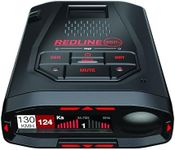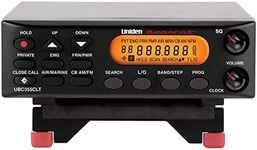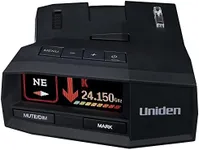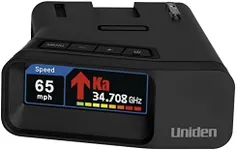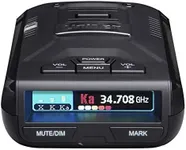Buying Guide for the Best Uniden Scanner
When choosing a Uniden scanner, it's important to consider what you plan to use it for, such as monitoring local emergency services, listening to aviation frequencies, or following amateur radio operators. Understanding your specific needs will help you select a scanner with the right features and capabilities. Additionally, consider where you will be using the scanner most often, as this can influence the type of scanner you should choose, whether it's a handheld model for portability or a base model for home use.Frequency CoverageFrequency coverage refers to the range of radio frequencies that the scanner can receive. This is important because different services operate on different frequencies. For example, police and fire departments might use different bands than aviation or marine services. Scanners with wide frequency coverage can pick up more channels, but if you are only interested in specific services, you might not need the broadest range. Consider what you want to listen to and ensure the scanner covers those frequencies.
Channel CapacityChannel capacity is the number of different frequencies or channels that the scanner can store and monitor. This is important for organizing and quickly accessing the frequencies you are interested in. Scanners with higher channel capacities allow you to store more frequencies, which is useful if you want to monitor multiple services or areas. If you only need to listen to a few channels, a scanner with a lower capacity might suffice.
Digital vs. AnalogScanners can be either digital or analog, and this refers to the type of signals they can receive. Digital scanners can pick up both digital and analog signals, while analog scanners can only receive analog signals. Many modern services are moving to digital communications, so if you want to future-proof your purchase or listen to digital services, a digital scanner is a better choice. However, if your area still uses analog signals, an analog scanner might be adequate.
Trunking CapabilityTrunking capability allows a scanner to follow conversations across different frequencies, which is common in modern radio systems used by public safety agencies. This is important if you want to listen to police, fire, or other services that use trunked radio systems. If the services you are interested in use trunking, ensure your scanner supports it. If not, a non-trunking scanner might be sufficient.
PortabilityPortability refers to whether the scanner is handheld or a base model. Handheld scanners are portable and can be used on the go, which is ideal for users who want to listen while traveling or moving around. Base models are larger and designed for stationary use, often offering better performance and more features. Consider where and how you plan to use the scanner to decide which type is best for you.
Ease of UseEase of use is about how user-friendly the scanner is, including its interface, controls, and programming. This is important because a scanner that is difficult to use can be frustrating and may prevent you from fully utilizing its features. Look for scanners with intuitive controls and clear displays. If you are new to scanning, you might prefer a model with simpler programming and operation.

